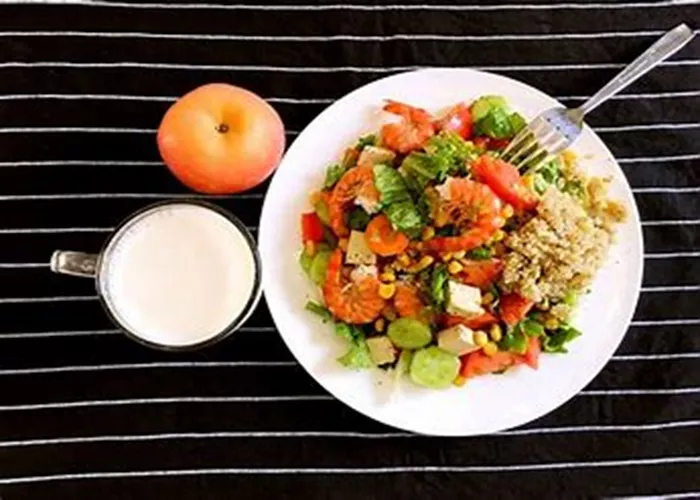Losing weight, particularly fat, is a common goal for many individuals. It’s often driven by a desire to improve health, boost self-esteem, or fit into certain clothing. But the question remains: what is the easiest fat to lose, and how can it be achieved effectively?
Understanding Fat Loss
To tackle this question, it’s essential to understand how fat loss works in the body. Fat, or adipose tissue, serves as an energy reserve. When the body needs more energy than it consumes through food, it taps into these reserves, breaking down fat cells to release energy.
However, not all fat is lost at the same rate. Different areas of the body store fat in various ways, and some fats are more stubborn than others. For instance, abdominal fat, especially the “visceral” fat surrounding internal organs, is often more resistant to loss compared to subcutaneous fat found under the skin.
The Role of Diet and Exercise
When it comes to losing fat, diet and exercise are the cornerstones of any successful weight loss plan. But which one is more important?
Diet
Nutritionists often emphasize that diet plays a crucial role in weight loss. What you eat determines the number of calories you consume, and maintaining a calorie deficit (consuming fewer calories than you burn) is essential for fat loss.
Calorie Control: Monitoring calorie intake is vital. Most westerners consume far more food than their bodies actually require.
Food Choices: Choosing nutrient-dense foods, such as vegetables and lean proteins, can help you feel full while consuming fewer calories.
Avoiding Sugary and Processed Foods: These foods are often high in calories and low in nutrients, making it easier to overeat.
Exercise
While diet is crucial, exercise also plays an important role. It helps burn calories and improve overall health.
Cardiovascular Exercise: Activities like jogging, swimming, or cycling increase heart rate and respiratory rate, burning calories efficiently. Aim for at least 15-20 minutes of vigorous exercise, five days a week.
Strength Training: Building muscle mass through activities like weightlifting or Pilates can increase your resting metabolic rate, meaning you burn more calories even when you’re at rest.
The Easiest Fat to Lose: A Misconception
The notion of “easiest fat to lose” can be misleading. Fat loss isn’t linear, and different people experience varying rates of loss in different areas. However, some general patterns can be observed.
Subcutaneous Fat: This type of fat, found directly under the skin, is often the first to be lost when someone starts a weight loss program. It’s relatively easy to reduce through calorie restriction and moderate exercise.
Visceral Fat: As mentioned earlier, visceral fat is more stubborn. It requires consistent diet and exercise, often over an extended period, to see significant reduction.
Localized Fat Loss: Many people believe they can target specific areas for fat loss (e.g., doing crunches to lose belly fat). However, this isn’t how fat loss works. You can’t spot reduce; fat loss occurs throughout the body.
Factors Influencing Fat Loss
Several factors can influence how easily fat is lost, including:
Genetics: Individual genetics play a significant role in body composition and fat distribution. Some people are naturally predisposed to storing more fat in certain areas.
Age: As we age, our metabolic rate slows down, making it harder to lose fat.
Gender: Hormonal differences between men and women affect fat distribution and loss. Women tend to store more fat in their hips and thighs, while men store it more in their abdomen.
Lifestyle: Sedentary lifestyles, poor diet, and stress can contribute to weight gain and make it harder to lose fat.
Practical Tips for Fat Loss
Here are some practical tips to help you lose fat effectively:
Set Realistic Goals: Aim for gradual weight loss (1-2 pounds per week) rather than rapid results. Sustainable changes lead to long-term success.
Track Your Progress: Keeping a food diary or using a fitness app can help you monitor your calorie intake and exercise.
Stay Hydrated: Drinking plenty of water can help boost metabolism and reduce appetite.
Get Enough Sleep: Lack of sleep can negatively impact hunger hormones, leading to increased food intake.
Manage Stress: Chronic stress can contribute to weight gain. Use relaxation techniques like deep breathing or meditation to manage stress.
Seek Professional Help: If you’re struggling to lose weight, consider consulting a dietitian or fitness trainer for personalized advice.
Conclusion
In conclusion, there’s no definitive answer to what the easiest fat to lose is. Fat loss is influenced by various factors, including diet, exercise, genetics, age, gender, and lifestyle. While some fats may be easier to lose than others, the key to successful weight loss is making sustainable changes to your diet and exercise habits.
Remember, the journey to weight loss is a marathon, not a sprint. Consistency, patience, and perseverance are essential for achieving your goals. By focusing on overall health and wellness, you’ll not only lose fat but also improve your quality of life.
Related topic:


